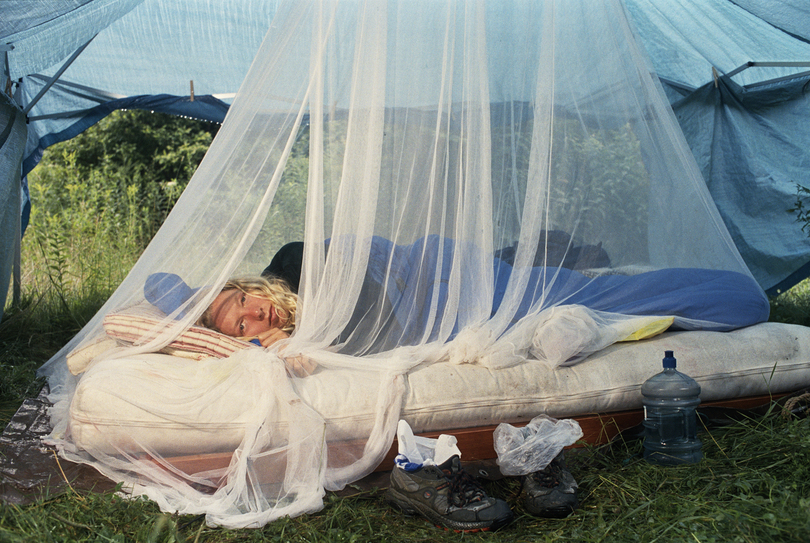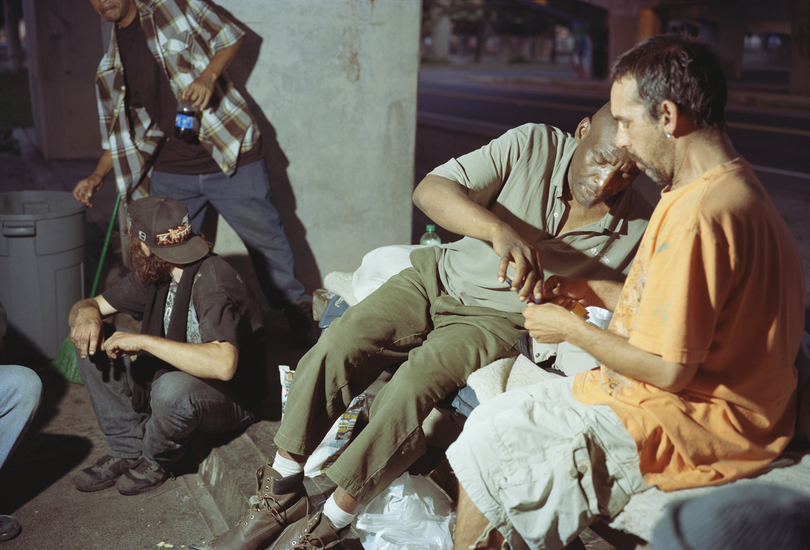Photographer documents recovery from environmental illness on campus
While pursuing her dream of being a professional photographer in New York City, Thilde Jensen received a call from an editor of Newsweek offering her a job. Jensen could barely speak, but, deliriously, she accepted.
“It was just so painful to be there, it was just so hard,” Jensen said. “I felt like a haunted animal because everything made me sick.”
When she received the call, Jensen was suffering from Idiopathic Environmental Intolerances, or environmental illness.
Environmental illness is a severe sensitivity or allergy-like reaction to any type of pollutant, such as plastics, petroleum products or ink on the pages of books. This extreme sickness drove Jensen away from New York City, her work and her husband.
Jensen, who is in her early-40s, is a central New York-based photographer who has been featured in publications such as The New York Times and The Telegraph. She is currently displaying a show “The Unwanted,” which will stay until Dec. 18 at the Light Work Hallway Gallery located on the Syracuse University campus. The gallery depicts the lives of homeless people in and around Syracuse.
Jensen thought she could recover after a few months of waiting out her symptoms, but soon after, she was so ill she could no longer pick up a camera without an aluminum foil cover. She managed to finish the job for Newsweek but it would be her last job for many years.
It wasn’t until Jensen arrived in Syracuse in 2003 to pursue a degree at the State University of New York College of Environmental Science and Forestry that she found another environmental illness sufferer, Julianna Martin, who gave Jensen a lot of advice about handling the illness.
“Things that used to be relaxing and fun, like the movies — that is your worst nightmare. It’s like someone torturing you,” Martin said. “Like, if someone really hated you, they’d make you go to the movies.”
Jensen said she hoped her studies at ESF would help her escape urban life and get into a new field involving nature. However, her respirator and gas mask were not protection enough from the chemicals she ran into on a day-to-day basis. Experiencing reactions to the heating system in her apartment, Jensen had to accept she could not live through a Syracuse winter. She eventually had to call her mother to say she was coming home to Denmark, where she would stay for only a small time.
It wasn’t until Jensen returned to Arizona, where the desert provides a natural shield from the outside world, that she began to find suitable coping methods for her environmental illness, she said.
Jensen was unable to use the computer or phone for prolonged periods of time. She needed to come up with creative ways to face everyday tasks.
“She had to have someone make her a phone that was made of wood with little plastic tubes that went over to the regular phone then she’d pick up the regular phone with a stick,” Martin said.
While recovering, Jensen began to realize she could “turn the camera around” on herself. She began documenting her coping experiences through self-portraits and following others who had escaped to the safe haven of Arizona.
The compilation of photographs Jensen captured came together under the title “The Canaries” and, in 2006, became her first Light Work Grant-winning project. Jensen became well enough to return to New York to capture images of environmental illness sufferers trapped in the pollution of the city.
“It felt very freeing and powering to be able to tell the story and use my ability to do photography to tell the story,” Jensen said.
John Mannion, the master printer for the Light Work gallery, worked with Jensen on “The Canaries.” In 2006, Jensen was still so ill she would have to sit a room’s length away from the computer on which her photographs were being edited.
“The Canaries” continued to be a massive success, earning critical acclaim, and Jensen self-published a book of the pictures. The collection was featured in 14 publications, including TIME LightBox’s Photobooks We Loved 2013 and Business Insider.
Jensen has returned to Light Work this year having received her second grant for her current project, “The Unwanted.” This group of pictures documents the lives of homeless people living in and around Syracuse.
Mannion said Jensen’s photography approach has not changed since recovering from environmental illness.
“She’s still interested in people who end up marginalized because of the condition that they find themselves in,” Mannion said.
Martin said she thinks it’s important for students to see the pictures of people struggling in the Syracuse community.
Jensen said she followed a lot of the people depicted in “The Unwanted” pictures for over a year. It is still difficult for her to enter into people’s homes because of her sensitivities — this project allows her to work outside, which doesn’t trigger her symptoms.
She said she probably wouldn’t have taken these pictures if it hadn’t been for her illness. She said she likes the honesty of the people pictured, adding that they show there is “no facade to protect us in daily life.”
Published on October 6, 2015 at 9:58 pm
Contact Rachel: rcgilber@syr.edu









